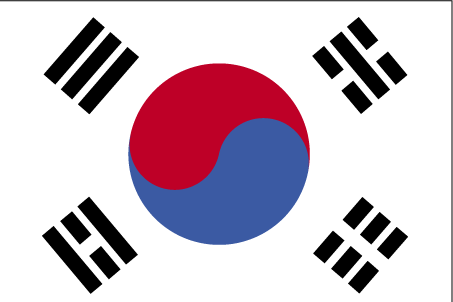Search
- Page Path
- HOME > Search
Opinion
- What is needed to increase the professional competencies of the military emergency medical technicians of the Republic of Korea Air Force?
-
Yong Yeon Jo
 , Se Jin Hwang
, Se Jin Hwang , Kun Hwang
, Kun Hwang
- J Educ Eval Health Prof. 2015;12:2. Published online January 28, 2015
- DOI: https://doi.org/10.3352/jeehp.2015.12.2
- 40,642 View
- 148 Download
Research Article
-
Medical doctors as the captain of a ship: an analysis of medical students’ book reports on Joseph Conrad’s “Lord Jim”

-
Kun Hwang
 , Seung Jae Lee
, Seung Jae Lee , Seong Yeon Kim
, Seong Yeon Kim , Se Won Hwang
, Se Won Hwang , Ae Yang Kim
, Ae Yang Kim
- J Educ Eval Health Prof. 2014;11:33. Published online November 27, 2014
- DOI: https://doi.org/10.3352/jeehp.2014.11.33
- 22,597 View
- 127 Download
- 2 Web of Science
- 1 Crossref
-
 Abstract
Abstract
 PDF
PDF - Purpose
In South Korean ferry disaster in 2014, the captain abandoned the ship with passengers including high school students still aboard. We noticed the resemblance of abandoning the ship with passengers still aboard the ferry (named the Sewol) and the ship Patna, which was full of pilgrims, in Joseph Conrad’s novel “Lord Jim.” The aim of this study is to see how medical students think about the role of a medical doctor as a captain of a ship by analyzing book reports on Conrad’s “Lord Jim.” Methods: Participants included 49 third-year medical students. Their book reports were analyzed. Results: If placed in the same situation as the character of Jim, 24 students of the 49 respondents answered that they would stay with the passengers, while 18 students indicated they would escape from the ship with the crew. Most of the students thought the role of a doctor in the medical field was like that of a ‘captain.’ The medical students reported that they wanted to be a doctor who is responsible for his or her patients, highly moral, warm-hearted, honest, and with high self-esteem. Conclusion: In conclusion, we found that “Lord Jim” induced the virtue of ‘responsibility’ from the medical students. Consequently, “Lord Jim” could be good teaching material for medical humanities. -
Citations
Citations to this article as recorded by- Analysis of the perceptions of medical students applying contextual relevance to literature
Kun Hwang, Ae Yang Kim, Hun Kim
The Asia Pacific Scholar.2018; 3(2): 47. CrossRef
- Analysis of the perceptions of medical students applying contextual relevance to literature
Brief Reports
-
Is a medical humanities test needed in the National Medical Licensing Examination of Korea? Opinions of medical students and physician writers (secondary publication)

-
Kun Hwang

- J Educ Eval Health Prof. 2014;11:16. Published online August 12, 2014
- DOI: https://doi.org/10.3352/jeehp.2014.11.16
- 29,357 View
- 157 Download
- 4 Web of Science
- 4 Crossref
-
 Abstract
Abstract
 PDF
PDF - The purpose of this study was to examine the opinions of medical students and physician writers regarding the medical humanities as a subject and its inclusion in the medical school curriculum. Furthermore, we addressed whether an assessment test should be added to the National Medical Licensing Examination of Korea (KMLE). A total of 192 medical students at Inha University and 39 physician writers registered with the Korean Association of Physician Essayists and the Korean Association of Physician Poets participated in this study. They were asked to answer a series of questionnaires. Most medical students (59%) and all physician writers (100%) answered that the medical humanities should be included in the medical school curriculum to train good physicians. They thought that the KMLE did not currently include an assessment of the medical humanities (medical students 69%, physician writers 69%). Most physician writers (87%; Likert scale, 4.38 ± 0.78) felt that an assessment of the medical humanities should be included in the KMLE. Half of the medical students (51%; Likert scale, 2.51 ± 1.17) were against including it in the KMLE, which they would have to pass after several years of study. For the preferred field of assessment, medical ethics was the most commonly endorsed subject (medical students 59%, physician writers 39%). The most frequently preferred evaluation method was via an interview (medical students 45%, physician writers 33%). In terms of the assessment of the medical humanities and the addition of this subject to the KMLE, an interview-based evaluation should be developed.
-
Citations
Citations to this article as recorded by- Medical students’ self-evaluation of character, and method of character education
Yera Hur, Sanghee Yeo, Keumho Lee
BMC Medical Education.2022;[Epub] CrossRef - Definition of character for medical education based on expert opinions in Korea
Yera Hur
Journal of Educational Evaluation for Health Professions.2021; 18: 26. CrossRef - Medical humanities in medical education and practice
Hedy S. Wald, Jonathan McFarland, Irina Markovina
Medical Teacher.2019; 41(5): 492. CrossRef - Medical humanities: developing into a mainstream discipline
P. Ravi Shankar
Journal of Educational Evaluation for Health Professions.2014; 11: 32. CrossRef
- Medical students’ self-evaluation of character, and method of character education
-
Would medical students enter an exclusion zone in an infected district with a high mortality rate? An analysis of book reports on 28 (secondary publication)

-
Kun Hwang
 , Hyung Sun Hong
, Hyung Sun Hong , Won Young Heo
, Won Young Heo
- J Educ Eval Health Prof. 2014;11:15. Published online August 11, 2014
- DOI: https://doi.org/10.3352/jeehp.2014.11.15
- 21,454 View
- 133 Download
- 1 Web of Science
- 3 Crossref
-
 Abstract
Abstract
 PDF
PDF - This study aimed to ascertain whether medical students would enter a closed area where there was a raging epidemic of an infectious disease with a high fatality rate, and includes reasons for the students entering or refusing to enter. Participants included 50 second-year medical students. They were assigned to read a novel entitled 28, written by Youjeong Jeong, and discuss it in groups. Using their book reports, their decisions of whether or not to enter Hwayang, the city from the novel, and the reasons for their decisions were analyzed; we furthermore investigated the factors affecting their decisions. Among the 50 respondents, 18 students (36%) answered that they would enter, and the remaining 32 students (64%) answered that they would not enter the zone. The reasons given for entering were responsibility (44%), sense of ethics (33%), social duty (17%), and sense of guilt (6%). The reasons the students provided for not entering were inefficiency (44%), worry regarding family (28%), needlessness of sacrifice (19%), and safety not ensured (9%). Students who had four or fewer family members were more likely to enter Hwayang than were students who had five or more family members (odds ratio, 1.85). Students who had completed over 100 hours of volunteer work were more likely to enter Hwayang than were students who had volunteered less than 100 hours (odds ratio, 2.04). Owing to their “responsibility” as a doctor, 36% of medical students answered that they would enter an exclusion zone in an infected district with a high fatality rate. However, 64% answered they would not enter because of “inefficiency.” For the medical students it is still a question ‘To enter or not to enter?’
-
Citations
Citations to this article as recorded by- A Rapid Systematic Review Exploring the Involvement of Medical Students in Pandemics and Other Global Health Emergencies
Anastasia Martin, Iris Martine Blom, Gemma Whyatt, Raghav Shaunak, Maria Inês Francisco Viva, Lopamudra Banerjee
Disaster Medicine and Public Health Preparedness.2022; 16(1): 360. CrossRef - Physician’s Role in Community Treatment Center
Kun Hwang
Health Insurance Review & Assessment Service Research.2022; 2(1): 131. CrossRef - Analysis of the perceptions of medical students applying contextual relevance to literature
Kun Hwang, Ae Yang Kim, Hun Kim
The Asia Pacific Scholar.2018; 3(2): 47. CrossRef
- A Rapid Systematic Review Exploring the Involvement of Medical Students in Pandemics and Other Global Health Emergencies

 KHPLEI
KHPLEI

 First
First Prev
Prev



